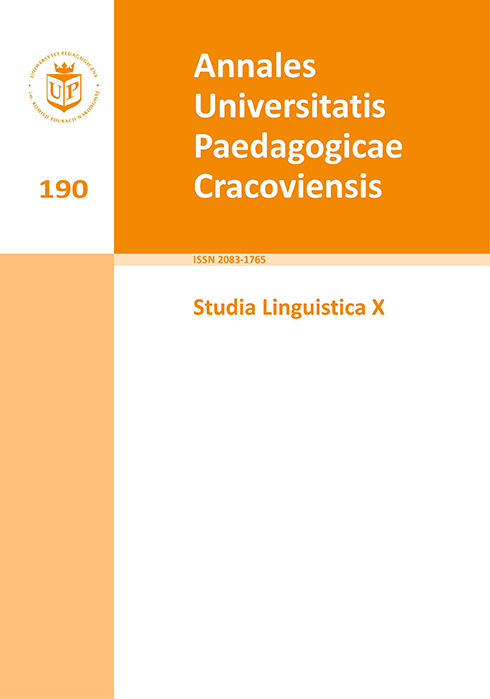Способи семантичної деривації в українській релігійній лексиці
Main Article Content
Abstract
We came to the conclusion that narrowing of meaning and metonymy are two main types of semantic derivation of all thematic fields of religious vocabulary (52% and 42%, respectively). Metaphor (6%) as a form of semantic derivation and an empirical classifier of the objects of observation is counterproductive in the religious sphere, since for the religious vocabulary empiricalness is not the main source of spiritual knowledge. Active narrowing of well-known and specialized meanings is the result of linguistic conservatism, the emergence of new functions of objects and changes in the knowledge about them. The disappearance of many of the primary meanings was induced by sustainable consolidation of religious narrowings, and frequent replacement of considerable part of them with synonymic equivalents made their functioning to be just a temporal phenomenon. Metonymy in the religious vocabulary as an effective means to achieve economy of speakers’ efforts is well-developed by local, temporal, causal, attributive and synecdochic types. Metaphors created directly by individuals in their religious activities and those from the Bible that underwent terminologization were created in different ways, namely according to the similarity of features (such as function, external feature, relation of subordination, unreal [but desirable] feature, associative characteristics of emotive evaluative nature).
Downloads
Article Details
Author, submitting a text to the editorial board of the journal “Annales Universitatis Paedagogicae Cracoviensis. Studia Linguistica", certifies that the content of the article has not been published so far and that the work does not violate in any way the copyright or related rights of other person, as well as other rights of third parties, and that no one's rights to the work (or any part thereof) have been missed. After signing the contract, the property rights to the published materials are transferred to the Scientific Publisher of the University of the National Education Commission, Krakow.
“Annales Universitatis Paedagogicae Cracoviensis. Studia Linguistica” is an open access journal, and all its content is made available free of charge to users and institutions under the Creative Commons CC-BY-NC-ND 4.0 license (attribution, non-commercial use, no derivative works). Under this license, the authors agree that their work may be lawfully reused for any purpose, except for commercial purposes, without the prior consent of the author or publisher. Everyone can read, download, copy, print, distribute and process these works, provided that the author's marking and the original publication place are correct. Published texts may not be used to create derivative works (e.g. to translate and publish in another language without the consent of the publisher). This is in line with the BOAI (Budapest Open Access Initiative) definition. "Studia Linguistica" does not charge for submitting or processing articles.
References
Арутюнова Н. Д., 1988, Типы языковых значений, Москва.
Google Scholar
Балалыкина Э. Г., 1993, Приключения слов, Казань.
Google Scholar
Bartmiński J., 2009, Językowe podstawy obrazu świata, Lublin.
Google Scholar
Бібла С., 2001, Склад, джерела і шляхи формування української церковної термінології (назви церковних чинів та посад), Київ.
Google Scholar
Гак В. Г., 1998, Языковые преобразования, Москва.
Google Scholar
Зализняк А., 2006, Многозначность в языке и способы ее представления, Москва.
Google Scholar
Львов А. С., 1975, Лексика „Повести временных лет”, Москва.
Google Scholar
Никитин М. В., 1996, Курс лингвистической семантики, Санкт-Петербург.
Google Scholar
Осінчук Ю., 2009, Історія української богослужбово-обрядової лексики, Київ.
Google Scholar
Падучева Е., 2004, Динамические модели в семантике лексики, Москва.
Google Scholar
Пауль Г., 1960, Принципы истории языка, Москва.
Google Scholar
Піддубна Н., 2000, Формування номенклатури назв релігійних споруд в українській мові, автореферат, Харків.
Google Scholar
Пуряєва Н., 2001, Формування української церковно-обрядової термінології (назви богослужбових предметів), автореферат, Київ.
Google Scholar
Silva М., 1983, Biblіcal Words and Their Meanings, Michigan.
Google Scholar
Тараненко О. О., 1980, Полісемічний паралелізм і явище семантичної аналогії, Київ.
Google Scholar
Ульман С., 1970, Семантические универсалии, [в:] Новое в лингвистике, вып. 5, с. 250–199.
Google Scholar
Шевченко Л., 2001, Семантична трансформація слів у текстах Нового Заповіту, [в:] Мовознавство, No3, с. 70–75.
Google Scholar
